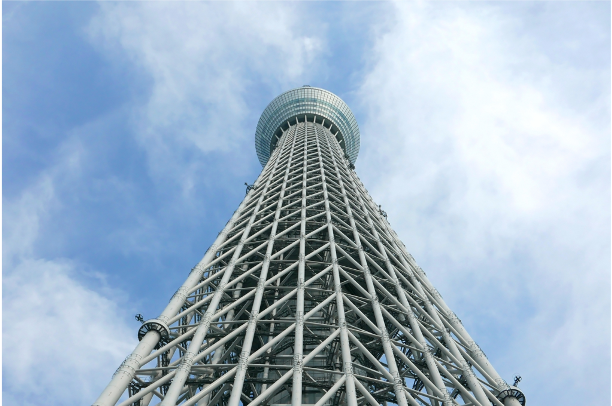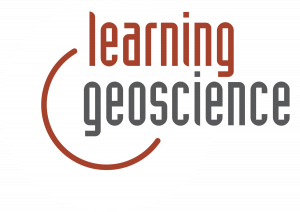
Instructor: Dr. Denis Voskov (TU Delft)
Duration: 12 hours in 5 weeks
Level: Intermediate
Format: This course consists of video lectures, reading material, quizzes, and 3 live interactive webinars with the instructor. The live webinars will take place from the third to the fifth weeks of the course as indicated in the schedule below. During this time the instructor will be available for questions. After that, participants will have time to study independently, review the course materials and complete the assignments.
Heating and cooling demand almost 50% of the EU's total gross energy consumption. A large portion of this energy can be delivered by direct heat geothermal resources. In this course, we will first give a brief introduction and general definitions of direct-use geothermal energy production. This introduction will be complemented with practical exercises on direct-use geothermal applications and the challenges they represent for reservoir engineers starting from a simplified conceptual model and finishing with a full 3D model in realistic geological sediments.

Title: Geological CO2 storage
Instructors:
- Andreas Busch (Heriot-Watt University)
- Eric Mackay (Heriot-Watt University)
- Florian Doster (Heriot-Watt University)
- Martin Landro (NTNU)
- Philip Ringrose (Equinor, NTNU)
Contributors Module 7:
- Tip Meckel (University of Texas at Austin)
- Elisabeth Holuscha (Plan-Wissenschaft)
Level: Foundation
CPD points: 15
Format: this extensive and interactive course consists of videos, presentations, (reading) assignments, quizzes and 7 live webinars with the instructors
Dates: 10 October - 19 December 2023
| Date | Time | Description |
|---|---|---|
| 10 October 2023 | Start of the course | |
| 24 October 2023 | 9:00 - 10:00 CEST | Webinar: Q&A Module 1 |
| 26- 30 October 2023 | Independent study | |
| 31 October 2023 | 9:00 - 10:00 CET | Webinar: Q&A Module 2 |
| 1-6 November 2023 | Independent study | |
| 7 November 2023 | 9:00 - 10:00 CET | Webinar: Q&A Module 3 |
| 8-20 November 2023 | Independent study | |
| 21 November 2023 | 9:00 - 10:00 CET | Webinar: Q&A Module 4 |
| 22-27 November 2023 | Independent study | |
| 28 November 2023 | 9:00 - 10:00 CET | Webinar: Q&A Module 5 |
| 29 Nov - 4 Dec 2023 | Independent study | |
| 5 December 2023 | 9:00 - 10:00 CET | Webinar: Q&A Module 6 |
| 6-11 December 2023 | Independent study | |
| 12 December 2023 | 9:00 - 10:00 CET | Webinar: Q&A Module 7 |
| 19 December 2023 | End of the course |
Duration: 24 hours
Note this is an estimate of the time required to go through the course, including watching/reading lectures and attending webinars.
After purchasing this course, you will have access to the intake quiz and introduction material. Lectures and exercises will become available from 10 October 2023 as per the schedule above. You will have access to the course material until 19 December 2023. Make sure to complete all the requirements for the achievement of the certificate by this date.
Certificate
A certificate of completion will be available upon completion of all course requirements. After the end of the course, your certificate will remain available for download in your Profile page.
Course outline
Module 1: Introduction
- Introduction to CCS
- Introduction to saline aquifer storage
- CO2 storage project design
Module 2: Reservoir concepts and storage requirements
- Reservoir/seal systems for pore space storage
- Storage capacity
- CO2 PVT
Module 3: Fluid mechanics (part I)
- Single phase flow in porous media - Darcy
- Single phase flow in porous media - Mass conservation
- Two-phase transport - Pore scale processes
Module 4: Fluid mechanics (part II)
- Two-phase transport: Introduction to relative permeability, capillary pressure
- Two phase transport: Non-linear processes
- Link to dynamic reservoir modelling/simulation
Module 5: Storage risks: Seals, assessment, geomechanics and geochemistry
- Geochemical requirements to safely store CO2
- Seal integrity
Module 6: CCS monitoring and risk assessment
- Well integrity and subsurface monitoring
- Seabed/shallow subsurface monitoring
- (Near) Surface and Marine monitoring
Module 7: Public perception, policy and emerging/niche CO2 storage options
- CO2 for enhanced oil production
- Emerging/niche options to store CO2
- Public perception and policy
Intended Audience
All those interested in the geoscience and engineering aspects or carbon capture and storage.
Pre-requisites
- None
By purchasing this course you agree to Terms and Conditions for Registration within EAGE.

Title: Introduction to Machine Learning for Geophysical Applications Instructor: J.C. (Jaap) Mondt, Breakaway Disciplines: Data Science - Machine Learning Level: Foundation CPD points: 10 Format: this course consists of video lectures, reading material, quizzes and 4 live interactive webinars with the instructor. The webinars will take place in the first two weeks as per the schedule below. During this time the instructor will be available for Q&A. Participants will then have time for independent study. Dates: 13 November - 13 December 2023. Registration Early feeuntil 8 days before the course start Regular fee from 7 days before the course start EAGE Bronze/Silver/Gold Member 325 EUR 375 EUR EAGE Platinum Member 325 EUR 325 EUR EAGE Green Member 385 EUR 435 EUR EAGE Bronze/Silver/Gold Student Member 150 EUR 175 EUR EAGE Green Student Member 175 EUR 200 EUR Non Member* 465 EUR 515 EUR Education Package 2 credits 2 credits *EAGE Membership for the remainder of the year is included in the non-member fee Buy Education Package Join EAGE today! Schedule Date Time Description 13 November 2023 15:00 - 18:00 CET Introduction webinar 14 November 2023 15:00 - 18:00 CET Q&A webinar 24 November 2023 15:00 - 18:00 CET Q&A. End of the course Duration: 14 hours Note this is an estimate of the time required to go through the course, including watching/reading lectures, attending webinars and completing quizzes. After purchasing this course, you will have access to the course material. Your access will expire at the end of the course. Make sure to complete all the requirements for the achievement of the certificate before this date. CertificateA certificate of completion will be available upon completion of all course requirements. After the end of the course, your certificate will remain available for download in your Profile page. Short description The aim of the course is to introduce how Machine Learning (ML) is used in predicting fluids and lithology. It will give an understanding of the “workflows” used in ML. The used algorithms can be studied separately using references. Power-point presentations and videos will introduce various aspects of ML, but the emphasis is on computer-based exercises using open-source software. Topic covered: The lectures and exercises deal with pre-conditioning the datasets (balancing the input classes, standardization & normalization of data) and applying several methods to classify the data: Bayes, Logistic, Multilayer Perceptron, Support Vector, Nearest Neighbour, AdaBoost, Trees. Non-linear Regression is used to predict porosity. Learning methods and tools At the end of the course participants will have a clear idea how Machine learning, being part of Artificial Intelligence will impact the future of Geosciences. This will be evident from the examples of Machine Learning discussed and applied to the case of predicting lithology and pore fluids. Intended Audience All those interested in understanding the impact Machine Learning will have on the Geosciences and then as an example the impact on lithology and pore-fluid prediction. Hence, geologists, geophysicists and engineers, involved in exploration and development of hydrocarbon or mineral resources Pre-requisites A basic understanding of Geophysics and Statistics. A Pre-requirement quiz can be taken by participants to check whether their knowledge of Geophysics and Statistics is sufficient to follow the course. By purchasing this course you agree to Terms and Conditions for Registration within EAGE.

Title: Non Seismic Acquisition Methods - Gravity and Magnetics
Instructor: Jaap C. Mondt, Breakaway
Disciplines: Near Surface Geoscience - Non Seismic Methods
Level: Foundation
CPD points: 10
Format: this course consists of video lectures, reading material, quizzes, 7 live interactive webinars with the instructor and a discussion forum. The webinars will take place in the first two weeks as per the schedule below. During this time the instructor will be available for Q&A. Participants will then have time for independent study.
Next deliveries: 27 August - 27 September 2024 (webinars at 16:00 - 18:00 CEST)
Registration |
Early fee until 8 days before the course start |
Regular fee from 7 days before the course start |
|---|---|---|
| EAGE Bronze/Silver/Gold Member | 305 EUR | 355 EUR |
| EAGE Platinum Member | 355 EUR | 355 EUR |
| EAGE Green Member | 475 EUR | 525 EUR |
| EAGE Bronze/Silver/Gold Student Member | 165 EUR | 190 EUR |
| EAGE Green Student Member | 190 EUR | 215 EUR |
| Non Member* | 555 EUR | 605 EUR |
| Education Package | 2 credits | 2 credits |
*EAGE Membership for the remainder of the year is included in the non-member fee
Buy Education Package Join EAGE today!
| Day | Date & time | Description | Details |
|---|---|---|---|
| Day 1 | 27 August 2024 16.00 - 18.00 CEST | Webinar: Introduction to Part 1 | 2 hrs |
| Day 2 | Independent study | ||
| Day 3 | 29 August 2024, 16.00 - 18.00 CEST | Webinar: Interactive Q&A |
2 hrs |
| Day 4-7 | Independent study | ||
| Day 8 | 3 September 2024, 16:00 - 18:00 CEST | Webinar: Interactive Q&A | 2 hrs |
| Day 9 | Independent study | ||
| Day 10 | 5 September 2024, 16:00 - 18:00 CEST | Webinar: Introduction to Part 2 | 2 hrs |
| Day 11-14 | Independent study | ||
| Day 15 | 10 September 2024, 16:00 - 18:00 CEST | Webinar: Interactive Q&A | 2 hrs |
| Day 16 | Independent study | ||
| Day 17 | 12 September 2024, 16:00 - 18:00 CEST | Webinar: Interactive Q&A | 2 hrs |
| Day 18-21 | Independent study | ||
| Day 22 | 17 September 2024, 16:00 - 17:00 CEST | Webinar: Conclusions | 1 hr |
Duration: 14 hours
Note this is an estimate of the time required to go through the course, including watching/reading lectures, attending webinars, consulting the discussion forum and completing quizzes.
After purchasing this course, you will have access to the course material. Your access will expire at the end of the course. Make sure to complete all the requirements for the achievement of the certificate before this date.
Certificate
A certificate of completion will be available upon completion of all course requirements. After the end of the course, your certificate will remain available for download in your Profile page.
Short description
Non-Seismic methods such as gravity and magnetics provide valuable complementary information about the subsurface that is not provided by Seismic methods. In this course you will learn about these techniques and their use in the search for hydrocarbons, ores, salt-fresh water boundaries, etc.
Learning goals
Upon completion, participants will understand the use of gravity and magnetics data, how they are acquired, the benefits of employing them in geophysical acquisition projects and how to decide how much money to spend on a Non-Seismic Project.
Participant profile
The course assumes a reasonable understanding of Physics.
Recommended readings
Philip Kearey, Michael Brooks, Ian Hill, An Introduction to Geophysical Exploration, John Wiley & Sons, April 2013.
J. D. Fairhead, Advances in Gravity and Magnetic processing and Interpretation, EAGE ISBN 978-94-6282-175-0.
By purchasing this course you agree to Terms and Conditions for Registration within EAGE.

Data Science for Geoscience
Instructor: Jef Caers, University of Stanford
Level: Intermediate
Format: this extensive and interactive course consists of presentations, (reading) assignments, quizzes and several webinars with the instructor.
Registration |
Early fee until 8 days before the course starts |
Regular fee from 7 days before the course starts |
|---|---|---|
| EAGE Bronze/Silver/Gold Member | 325 EUR | 375 EUR |
| EAGE Platinum Member | 325 EUR | 325 EUR |
| EAGE Green Member | 385 EUR | 435 EUR |
| EAGE Bronze/Silver/Gold Student Member | 150 EUR | 175 EUR |
| EAGE Green Student Member | 175 EUR | 200 EUR |
| Non Member* | 465 EUR | 515 EUR |
| Education Package | 2 credits | 2 credits |
*EAGE membership for the remainder of the year is included in the non-member fee
Join EAGE today! Buy Education Package
| Webinar | Topic | When | Duration |
|---|---|---|---|
| 1 | Extreme Value Analysis | Friday, 3 November 2023 | 17:00 - 18:00 CEST |
| 2 | Statistical Geochemistry | Thursday, 9 November 2023 | 17:00 - 18:30 CEST |
| 3 | Spatial Data Aggregation | Friday 10, November 2023 | 17:00 - 18:00 CEST |
| 4 | Geostatistics | Thursday, 16 November 2023 | 17:00 - 19:00 CEST |
Duration: 14 hours
Note this is an estimate of the time required to go through the course, including watching/reading lectures and attending webinars. Lectures and exercises will become available on the first day of the course. You will have access to the course material for a period of 1 month after the start. Make sure to complete all the requirements for the achievement of the certificate by this date.
Certificate
A certificate of completion will be available upon completion of all course requirements. After the end of the course, your certificate will remain available for download in your Profile page.
Course description
This course provides an overview of the most relevant areas of data science to address geoscience challenges, questions and problems. Using actual geoscientific research questions and practical cases as background, principles and methods of data scientific analysis, modeling, and prediction are covered. The material aims at exposure & application over in-depth methodological or theoretical development. Data science areas covered are: extreme value statistics, multi-variate analysis, factor analysis, compositional data analysis, spatial information aggregation models, spatial estimation, geostatistical simulation, treating data of different scales of observation, spatio-temporal modeling. Application areas covered are: predicting volcano magnitudes, landslides, finding causes of contamination, predicting sea-level rise, groundwater modeling & management, landslide susceptibility assessment, mineral & geothermal potential mapping, interpolating missing remote sensing data and others. Students are encouraged to participate actively in this course by means of their own data science research challenge or question. Home-works will consist of reading papers and being able to synthesize the essential data science tools. To run code of a few selected method and a presentation on a data scientific topic of choice. The code will be embedded in notebooks that will contain data examples
Course objectives
Upon completion of this course, participants will be able to:
1. Identify a combination of data science methods to address a specific geoscientific question or challenge whether related to the environment, earth resources or hazard, and its impact on humans
2. Use statistical software on real datasets and communicate the results to a non-expert audience
Prerequisites
Basic intro to statistics & probability theory, some matrix algebraParticipant profile
This course is intended for students and professionals who like to learn about data science method that address common geoscience challenges
About the instructor

Jef Caers received both an MSc (’93) in mining engineering / geophysics and a PhD (’97) in engineering from the Katholieke Universiteit Leuven, Belgium. Currently, he is Professor of Geological Sciences (since 2015) and previously Professor of Energy Resources Engineering at Stanford University, California, USA. He is also director of the Stanford Center for Earth Resources Forecasting, an industrial affiliates program in decision making under uncertainty with ~20 partners from the Earth Resources Industry. Dr. Caers’ research interests are quantifying uncertainty and risk in the exploration and exploitation of Earth Resources. Jef Caers has published in a diverse range of journals covering Mathematics, Statistics, Geological Sciences, Geophysics, Engineering and Computer Science. Dr. Caers has written four books entitled "Petroleum Geostatistics” (SPE, 2005) “Modeling Uncertainty in the Earth Sciences” (Wiley-Blackwell, 2011), "Multiple-point Geostatistics: stochastic modeling with training images" (Wiley-Blackwell, 2015) and “Quantifying Uncertainty in Subsurface Systems (Wiley-Blackwell, 2018).
By purchasing this course you agree to Terms and Conditions for Registration within EAGE.EAGE membership for the remainder of the year is included in the non-member fee

Make sure you are logged in in the platform before finishing your registration process, if you are having issues with the registration please contact registration@eage.org
By purchasing this course you agree to Terms and Conditions for Registration within EAGE.
